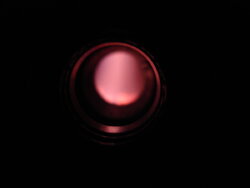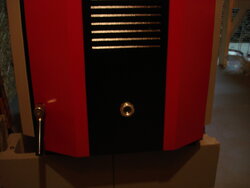Installed a secondary chamber window and now there is one more thing to look at 
Wondering what is considered a good flame, it seems to be different than tuning a torch flame. One would think that the primary air would be the fuel gas (acetylene) and the secondary air (oxygen).
Well all was well until I actually moved the secondary shutter. I seem to have the bluest and most stable flame with the secondary almost closed and primary wide open. The book recommends primary 100% and secondary 33%. Right mow I'm primary 100% and secondary 5% in the middle of the burn.
What say you?
Tune to the most stable flame? color? time of burn? So many questions now that I can see whats going on in there! This is GREAT!
TS

Wondering what is considered a good flame, it seems to be different than tuning a torch flame. One would think that the primary air would be the fuel gas (acetylene) and the secondary air (oxygen).
Well all was well until I actually moved the secondary shutter. I seem to have the bluest and most stable flame with the secondary almost closed and primary wide open. The book recommends primary 100% and secondary 33%. Right mow I'm primary 100% and secondary 5% in the middle of the burn.
What say you?
Tune to the most stable flame? color? time of burn? So many questions now that I can see whats going on in there! This is GREAT!
TS






 glad windows for the house aren't $70/inch
glad windows for the house aren't $70/inch